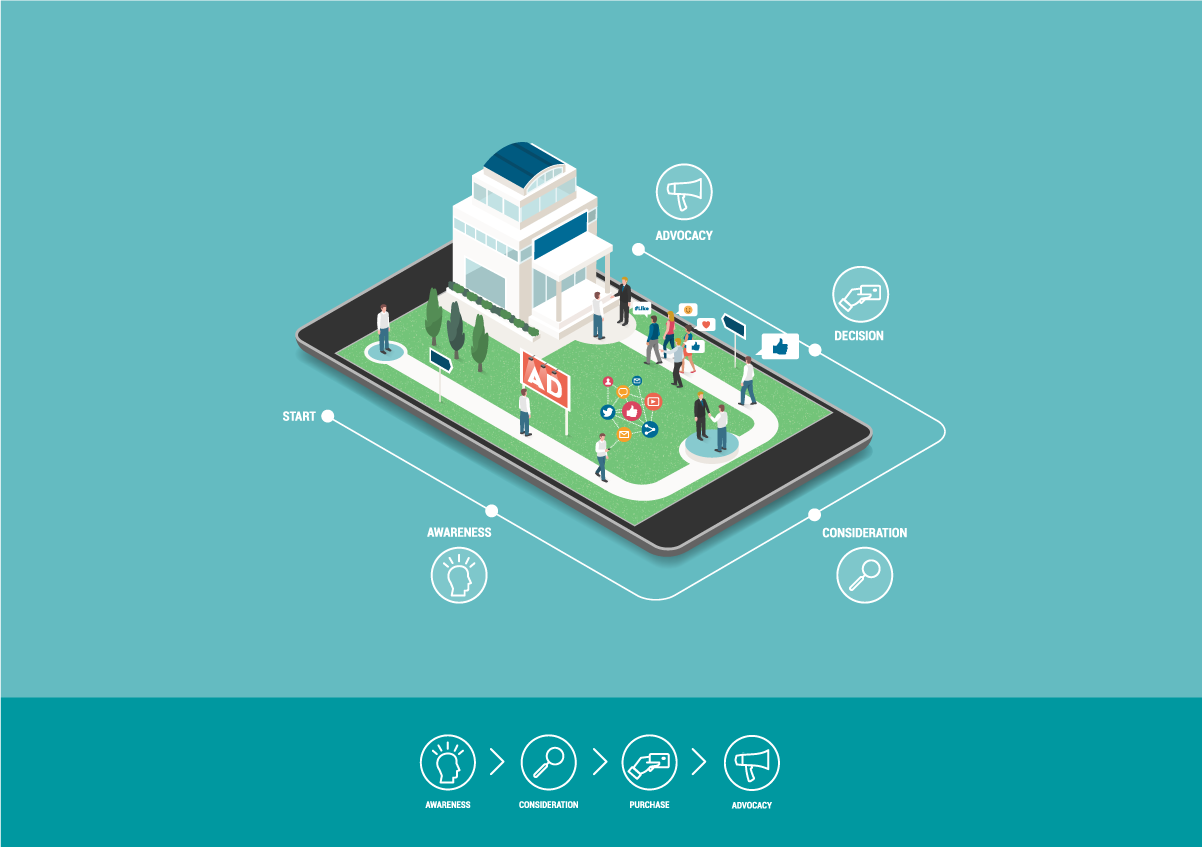All You Need to Know About Creating A Dynamic Buyer’s Journey Funnel
It might not be a big surprise when you hear that over 50 per cent of most buyer journeys occur in the digital space. Most people spend the majority of their time, either at work or at home, in front of digital devices. They research their purchases, read reviews, compare websites, and even finalize their […]

It might not be a big surprise when you hear that over 50 per cent of most buyer journeys occur in the digital space. Most people spend the majority of their time, either at work or at home, in front of digital devices. They research their purchases, read reviews, compare websites, and even finalize their decisions by adding the given product to checkout.
While the events being tracked by websites climb over time, this further complicates our control over the buyer’s digital journey. How can you improve the steps of your funnel, so that people never get stuck between them? The solution is not as complex as one might think and it’s called the dynamic buyer’s journey funnel.
Take the extra steps to set up a more dynamic buyer journey
Although you often get to know your audience, most of the time in the digital space your visitors are anonymous until they convert into your database. The first easily controlled step in the dynamic buyer journey is the user’s consideration. Before that, however, there is another stage that leads the user to consider.
Nowadays, information is available in a wide variety of forms – videos, analysts, review sites, magazines, advertisements, social media, newsletters and many others. Sometimes, due to the overload of information, an individual might get stuck between the steps in a buyer journey.
Digital Buyer Journey Stage 1: Awareness
The awareness stage is when your potential clients have already recognized the need to solve a certain problem. For example, they want to clean their house, thus they need a new vacuum cleaner. From then on, they would dive into the vacuum cleaner market, most often digitally researching, reading reviews and comparing ratings. When they make a certain decision, they are going to go to the next step and choose a place to buy from.

The key takeaway from this stage is that you need to get noticed during it, in order to be considered for further purchase and get onto the next stage – consideration. Sometimes, when looking for a solution to one’s problem, potential clients skip the consideration stage and go on the decision. This happens rarely, and only when your company’s value proposition matches the client’s needs and worldview in an instant. This is the main reason why for some products, the more niche the targetted audience, the better.
During the awareness stage, the buyer’s journey might go through:
- Reading blog posts, social posts
- Researching studies
- Reading eBooks or guides
- Reading white papers
- Browsing videos, or educational content
- Checking Analyst reports or reviews
If your product or service is mentioned more than your competitors in the above-listed funnels, then you are on the right track to increase your advantage.
How to improve your stage 1:
- Improve your organic rankings.
- Create as much relevant content as possible and spread it through the funnels mentioned above.
- Create social media pages.
Digital Buyer Journey Stage 2: Consideration

Let’s say your potential clients have recognized the problem, and now they are certain that they need a vacuum cleaner, instead of a mop, for example. They are diving into research. In order to get noticed, you need product placement, advertising, word of mouth, and niche targeting, in order to lower down your cost basis.
More often than not, during this stage, the potential customer might be aware of your product, but they are far from ready to commit to it. They are comparing and evaluating different opportunities, weighing the prices, and the value each option brings to them.
During the second stage, people most often research by:
- Watching videos
- Reading Expert guides
- Comparing papers or articles
- Listening to podcasts
- Examining case studies
How to improve your stage 2:
- Add peer reviews and testimonials.
- Create FAQ pages.
- Feature your products in videos, podcasts, reviews, Ebooks, white papers, expert guides, etc.
Digital Buyer Journey Stage 3: Decision
This is the stage where you have to battle all objections that you might find in the mind of your potential clients. Is the vacuum cleaner you’re selling out of their price range? It might be, but if it comes with a 10-year warranty, and a quality no other vacuum cleaner brings, then it might actually result in some savings in the long run for them. When your clients are considering your product, you need to share with them your value proposition. If you still haven’t managed to come up with a great value proposition, you can read here how to devise one that converts.
During this stage, the client has decided that they need a product from this sector. (For example, a vacuum cleaner).
Now they are more inclined toward:
- Comparing reviews of products
- Comparing vendors and products
- Reading testimonials, case studies
- Browsing product demonstrations and literature
How to improve your stage 3:
Make sure that your website’s content is targetted at a niche audience, and that it addresses the concerns that might arise in an individual during the decision stage. Optimize your navigation, make the call to actions clear, and ensure that all leads are driven toward the bottom of the sales funnel.
Moreover, make sure there aren’t any distractions like advertisements on your website, that might make your clients bounce off and never convert.

Making Your Buyer’s Journey Funnel Dynamic
Even if we are aware of the steps that traditionally potential conversions go through, sometimes they go up and down, skip steps, or reinitiate the process. In order to properly address their needs and improve the chances of a visitor to convert, our website needs to focus on several elements.
Create Automation
To manually set up and manage rules, create and upload content all the time, and maintain social media at the same time is virtually impossible for anyone. Even with hired personnel, sometimes the process is not as cost-effective as we would want it to be. Consider implementing automation in many aspects of your dynamic journeys.
Profiling can be done automatically, and you can discover content, as well as you can use smart tools like GPT-3 AI to generate ideas for you.
Target your Content
Ensure that you are using intelligent profiling and track more than one parameter of your unique visitors. This way, you can take into consideration their behaviours, interests, and intentions. Having a more detailed profile of anyone enables your systems to tailor an offer to the individual.
Trust AI and automation. Try out solutions that rely on targeting individuals instead of segments or personas. Similar tools might work on parameters such as crowd behaviour, content reads, behaviour, search engine keywords, or textual hints.
Become Cross Channel
Use blogs, landing pages, websites, home pages and engage your audience with compelling offers. Study their behaviours (bouncing, researching, browsing, converting, etc.) across all devices that they’ve accessed your website. For example, if your conversion rate deviates highly from desktop to mobile devices, you should know why. Pinpoint the fault and fix it right away with A/B testing.
Tailoring the right content to the right visitor during the exact time will result in more conversions than you might think.
Don’t neglect Analytics
As a rule of thumb, the majority of your website’s visitors would be anonymous (95 per cent or more). This means you wouldn’t normally have a lot of data on these fellows. Moreover, if you take into account the increasingly dynamic behaviour of anyone on the internet, that further worsens our insights.
Large audiences can act in the same way, and you can tap into their buying patterns, or objections when you study them closely with data analytics and insights. Leverage the information you have and generate more leads, optimize conversions or spread awareness.
Conclusion
With an ever decreasing awareness span, our customers tend to spend less and less time on each stage of the buyer’s journey. Make sure you are straight to the point in the Decision stage and spread niche awareness of your product to increase the number of organic visitors to your website.
Automating content across multiple channels might seem like a chore at first, but with the power of data analytics, your business can do wonders online, even in a constantly changing world.

